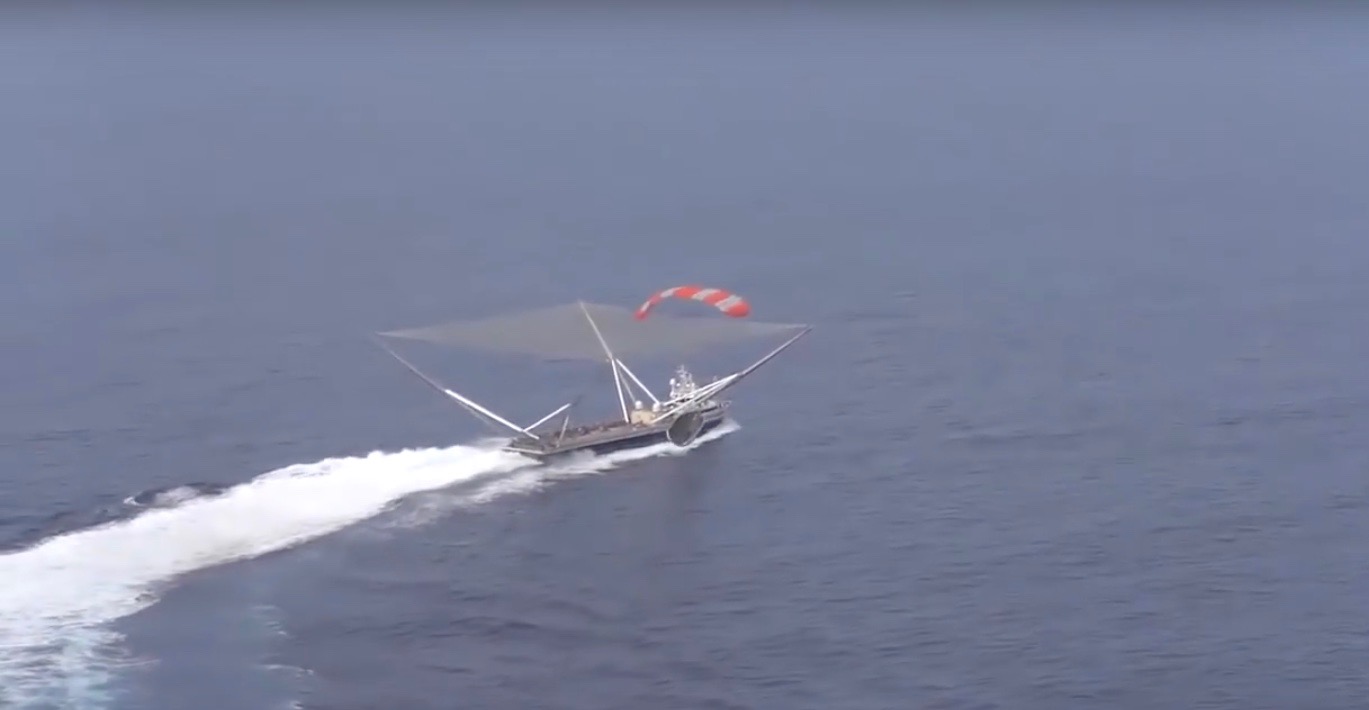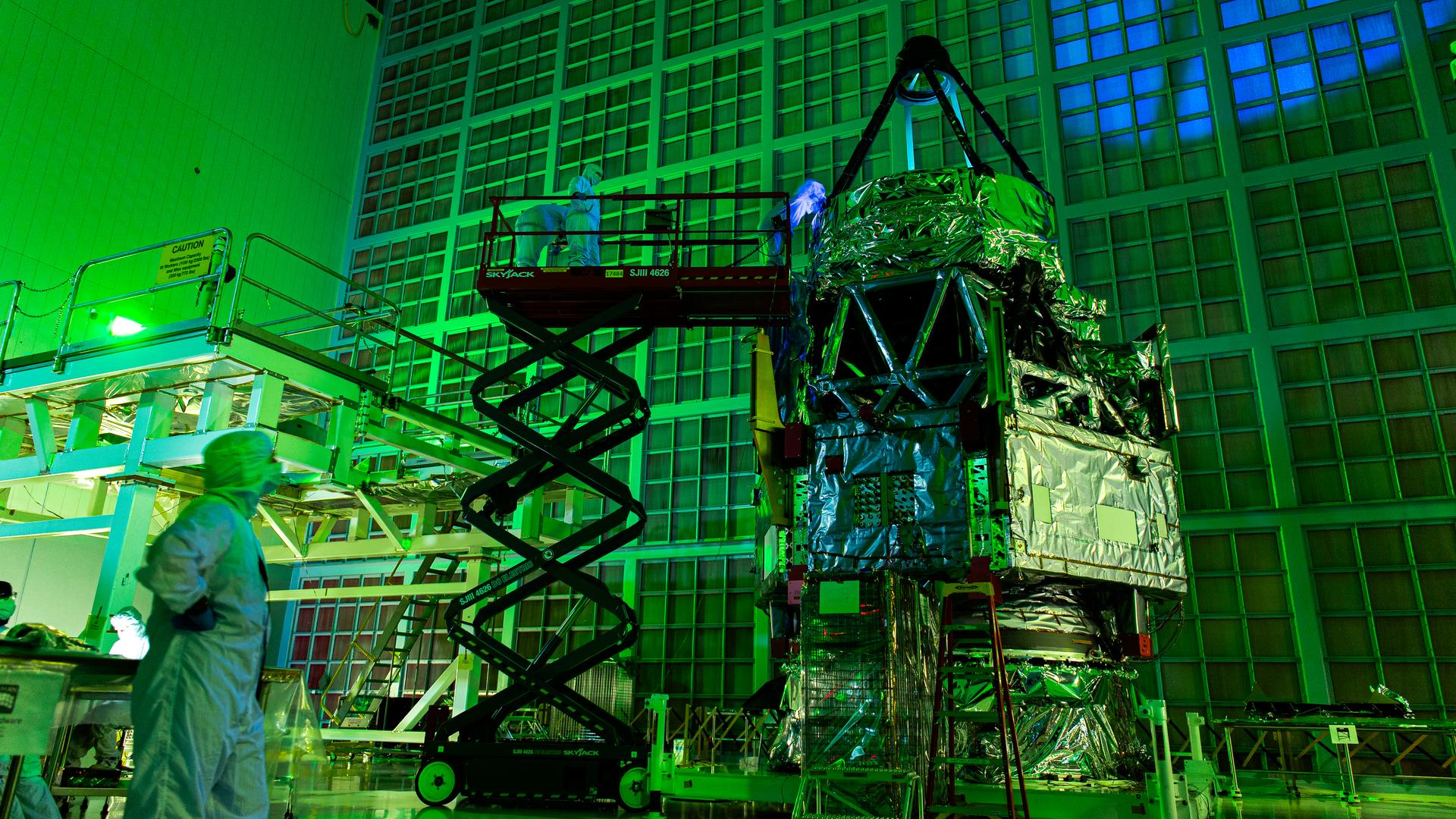Close But No Cigar: Watch SpaceX's Mr. Steven Just Miss Catching a Rocket Fairing in Test (Video)
SpaceX's net-equipped boat, Mr. Steven, came agonizingly close to plucking a falling rocket payload fairing out of the sky during a recent test, a new video shows.
The fairing splashed down in the ocean right next to Mr. Steven, riding the whitewater wake generated by the speedy boat. And "right next to" is no exaggeration; Mr. Steven's broad net appeared to snag the edge of the fairing's parafoil. You can watch the video on YouTube here.
The test appeared to take place in the Pacific Ocean, just off the California coast (based on the terrain, and the fact that SpaceX headquarters is in the Los Angeles area, as is the home port for Mr. Steven). A helicopter lifted the payload fairing off the deck of a different ship, carried it high into the sky, and then dropped it, as shown in the 59-second video, which SpaceX posted on Twitter yesterday (Jan. 7). [SpaceX's Mr. Steven: A Rocket Nose-Cone Catching Boat in Photos]
Like a dog going after a Frisbee, Mr. Steven tried to chase it down.
Payload fairings are the protective nose cones that surround satellites during launch. Each fairing for SpaceX's workhorse Falcon 9 rocket costs about $6 million, company founder and CEO Elon Musk has said, which explains the drive to catch, and then reuse, them.
Indeed, reuse is a big priority for SpaceX, which routinely lands and reflies Falcon 9 first stages. The long-term goal of such activities is to cut the cost of spaceflight significantly — enough to make Mars colonization and other ambitious exploration feats economically feasible.
Falcon 9 fairings fall back to Earth in two pieces, each of which has small thrusters for steering and a descent-slowing parafoil. (The recent catch test involved a fairing half, not a full fairing.)
Breaking space news, the latest updates on rocket launches, skywatching events and more!
Mr. Steven has gone after fairing halves multiple times during operational orbital launches but has not yet caught one.
Successful snags would keep fairing halves from getting dunked in seawater, which is quite corrosive. But such interceptions may not actually be necessary for fairing reuse: After a Mr. Steven near miss during an epic 64-satellite launch last month, Musk said that SpaceX planned to dry out the fairing halves and use them again.
Mike Wall's book about the search for alien life, "Out There" (Grand Central Publishing, 2018; illustrated by Karl Tate) is out now. Follow him on Twitter @michaeldwall. Follow us @Spacedotcom or Facebook. Originally published on Space.com.

Michael Wall is a Senior Space Writer with Space.com and joined the team in 2010. He primarily covers exoplanets, spaceflight and military space, but has been known to dabble in the space art beat. His book about the search for alien life, "Out There," was published on Nov. 13, 2018. Before becoming a science writer, Michael worked as a herpetologist and wildlife biologist. He has a Ph.D. in evolutionary biology from the University of Sydney, Australia, a bachelor's degree from the University of Arizona, and a graduate certificate in science writing from the University of California, Santa Cruz. To find out what his latest project is, you can follow Michael on Twitter.

